TV, movies and art mostly ignore abortion stories. Why that harmed the Roe vs. Wade debate
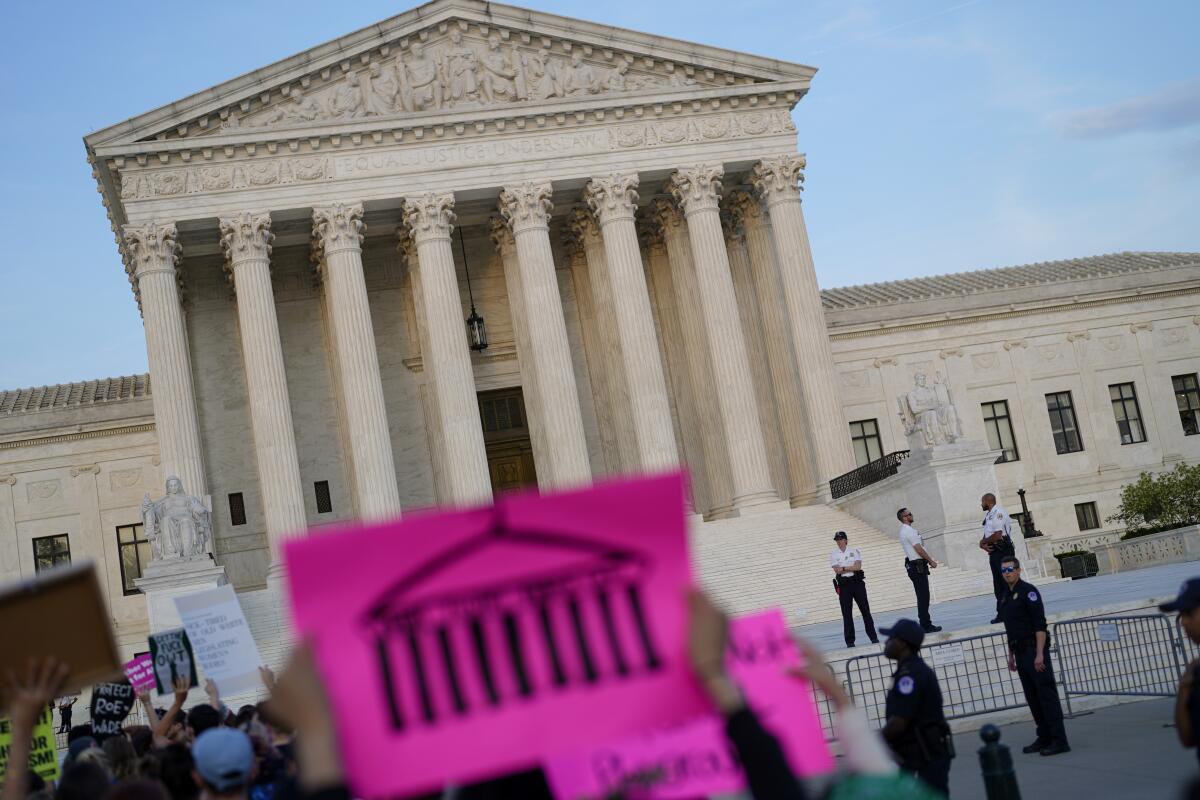
- Share via
Which barricade are we at this week? Because it seems with each passing day there are more. This is Carolina A. Miranda, arts and urban design columnist, with the week’s blazing culture news — and a strange tale about the sculpture of a head.
Art and abortion
The likely imminent overturn of Roe vs. Wade by the U.S. Supreme Court is occupying my cerebral cortex and my waking hours (which seem to come, more frequently, at midnight). How is it, exactly, that a right to bodily autonomy, supported by a majority of Americans, remains a protracted struggle? Well, that’s a long story — one best told by Randall Balmer in this 2014 report in Politico, which digs into the antiabortion movement’s roots. It had little to do with preserving life and more to do with finding a cause that right-wing Christians could rally around in the wake of a faltering battle in support of segregation, years after the Roe ruling.
(A good companion piece is this eyebrow-raising profile in the Lily about the Mississippi state attorney general — whose case is the one at the crux of the decision.)
As with everything, the abortion rights struggle is just as much about culture as it is about politics. Cultural institutions have helped preserve taboo attitudes toward abortion by generally avoiding depicting a medical procedure that nearly one in four American women have by age 45. In an essay published this week, Times culture critic Mary McNamara zeroed in on the ways in which abortion has been portrayed — and not — in television and film. “With the exception of series and films that revolve around an unexpected and/or unwanted pregnancy,” she writes, “I can count on one hand the number of storylines involving abortion as it most often occurs.”
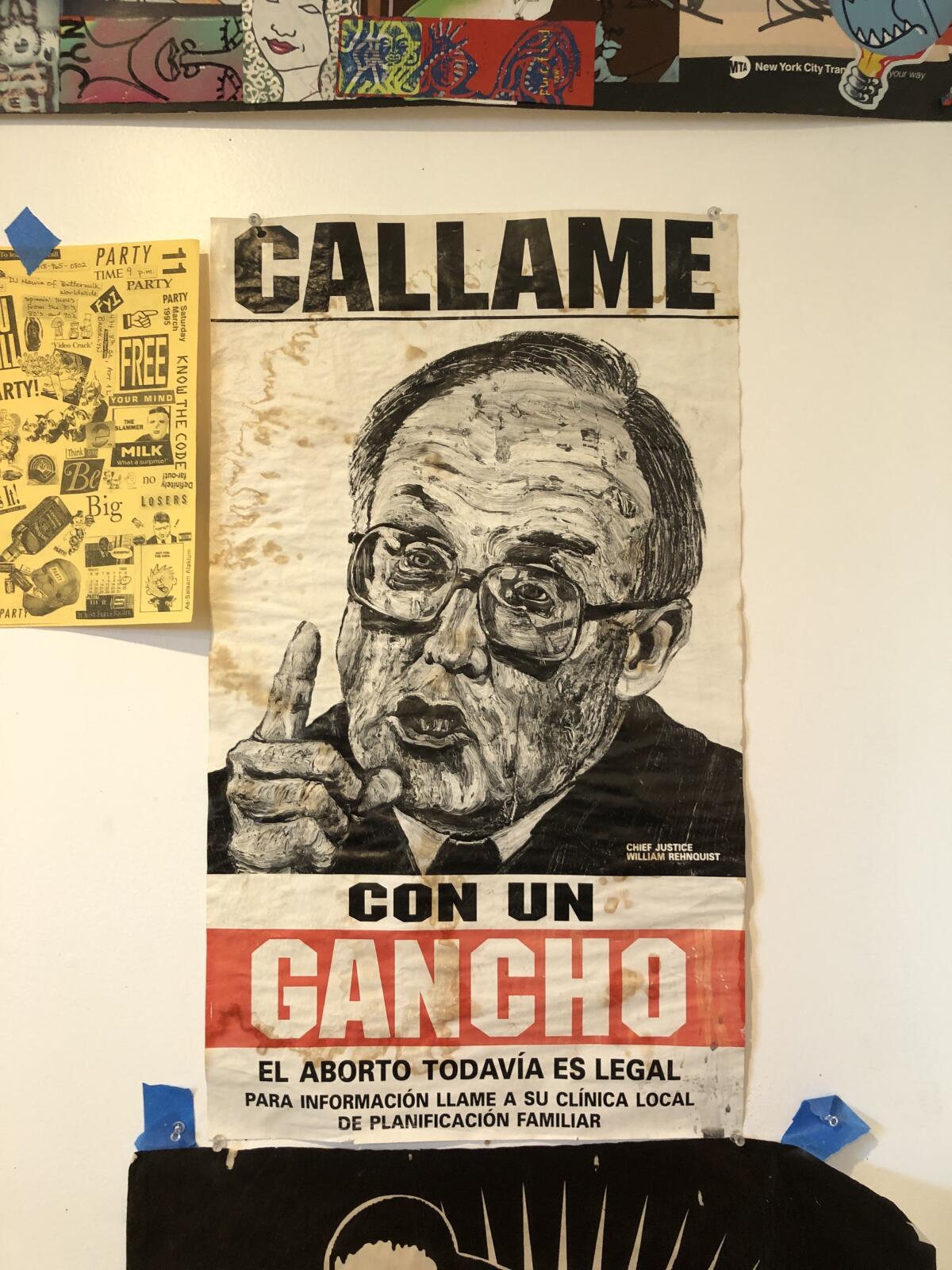
Visual artists have directly engaged abortion — but instances remain marginal.
LACMA’s collection contains Ed Kienholz’s infamous 1962 assemblage “The Illegal Operation,” which points to a procedure that, legal or not, has taken place throughout history. (It’s currently on view on the third floor of the Broad Contemporary Art Museum.)
In 2020, the Museum of Sex in New York City featured a searing exhibition by Barcelona-based artist Laia Abril, who, through photographs, documents and artfully chosen objects, made the case that abortion is part of life the world over — yet the consequences for women remain deadly. As Russet Lederman wrote in Aperture of that show: “Abril makes abundantly clear that abortion is unequivocally linked to sex and that the only way to depoliticize, decriminalize, and liberate the right to a difficult private decision is to make visible the factual evidence and tragic outcomes that have harmed women when abortion is denied or limited.”
Last year, likewise, a retrospective of the work of Paula Rego at the Tate in London featured her unblinking painted series on abortion, showing women enduring illegal procedures. As critic Eloise Hendy, writing in Elephant, said of them: “Rego’s works are still shocking, largely because of their rarity. Although numerous visual artists have challenged dominant ideas about the body and female agency, there remains remarkably little art that confronts abortion explicitly.”
Make the most of L.A.
Get our guide to events and happenings in the SoCal arts scene. In your inbox every Monday and Friday morning.
You may occasionally receive promotional content from the Los Angeles Times.
If abortion remains marginal in museum galleries, it has, over the years, informed some iconic political graphics.
Hanging in the studio I share with my husband is L.A. artist Robbie Conal’s 1992 print “Callame Con Un Gancho” (see the photo above) featuring the late Supreme Court Justice William Rehnquist wagging a paternalistic finger. It is the Spanish-language companion to a similar poster titled “Gag Me With a Coat Hanger” — and if the one on my wall looks a little beat up, it’s because it may or may not have been liberated from a Los Angeles construction barrier where a group called “the Guerrilla Matrons” pasted them up in the 1990s. (The Times had a story about that back in ’92.)
There is also Barbara Kruger’s unforgettable “Your Body is a Battleground,” made for the Women’s March in 1989. It is, as I note in a short dispatch, “the modern, feminist, second-person counterpoint to Uncle Sam insisting, ‘I Want You for U.S. Army.’”
It’s also all over Los Angeles: The original pasteup is hanging at Sprüth Magers, an original silkscreened image of the graphic — trimmed in red — is in the collection of the Broad, and a digital version of the piece is currently on view at LACMA as part of the artist’s ongoing career survey, “Thinking of You. I Mean Me. I Mean You” (with the first “you” and “me” crossed out).
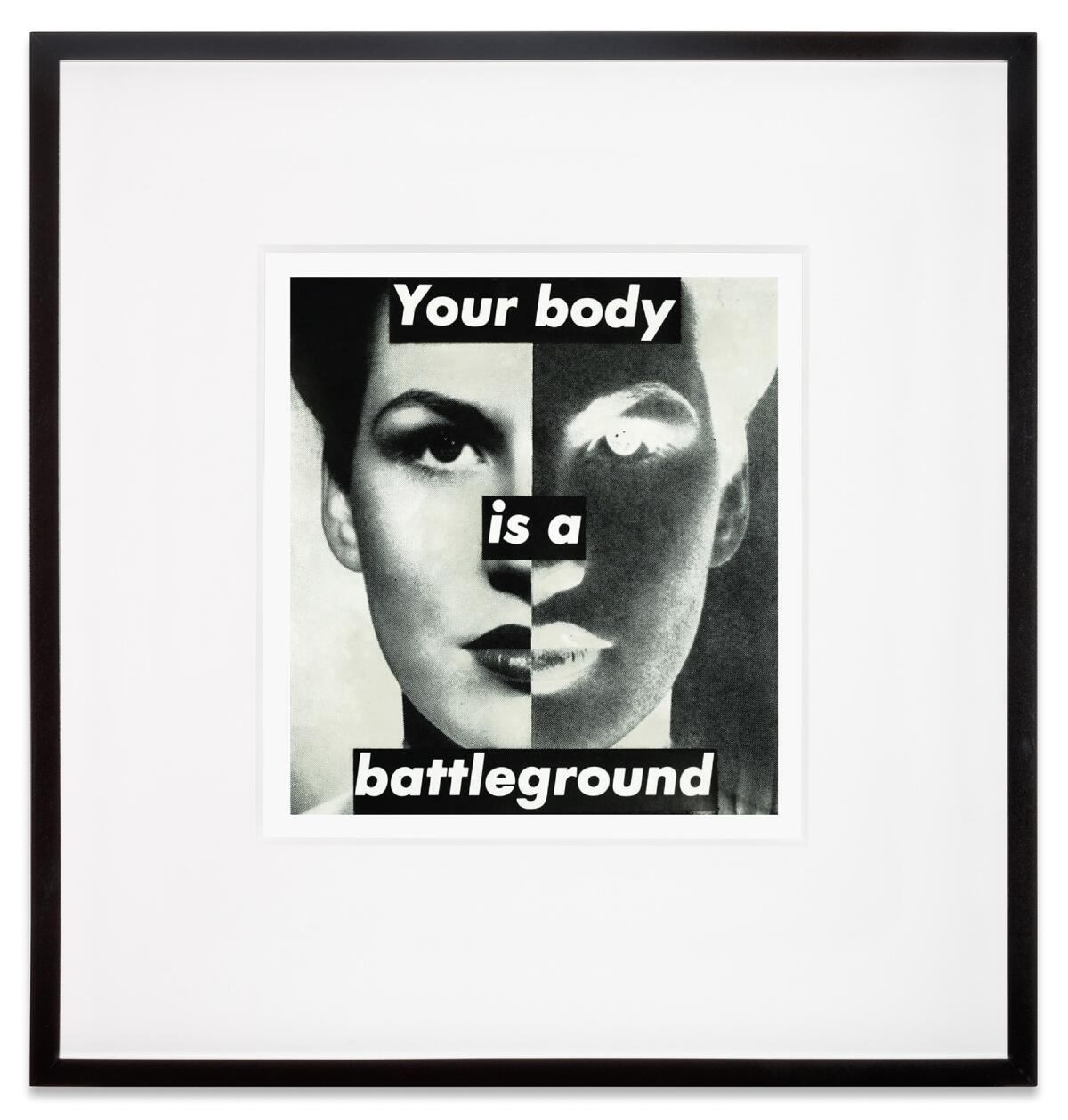
But even if individual artists are addressing abortion, institutions largely remain silent, as noted in a report in the Art Newspaper by Jori Finkel. In the wake of the leak on Monday, the Metropolitan Museum of Art posted photos of centerpieces from its gala and LACMA shared an image of an 18th century painting by John Singleton Copley. “The few exceptions included the Institute of Contemporary Art (ICA) San Francisco, a new kunsthalle founded by Ali Gass,” writes Finkel, “and the more established Hammer Museum in Los Angeles, led by Ann Philbin, both of which position themselves as socially engaged.”
This moment calls for much more. And this essay by Wendy Vogel published in Artforum last year — on the occasion of various abortion-themed shows (some of which are mentioned here) — offers a good explanation why. In the opening paragraphs, Vogel talks about her experience working for a women’s health clinic in Texas, describing “the vehement imagery” of antiabortion protestors.
Perhaps it’s time for art to own the vehemence, in a debate where the will of a majority is being relentlessly trampled.
Classical notes
Three years ago — a.k.a. in the before time — Thomas Adès’ “Inferno” had its premiere as part of the L.A. Phil’s centennial season. Since then, Adès has added two additional parts inspired by Dante’s epic poem to this work: “Purgatorio” and “Paradiso.” Last weekend, the full orchestral score, called “Dante,” received its concert premiere in L.A. as part of a Gen X festival organized by the British composer. “In any new shortlist of great ballet scores by Tchaikovsky, Stravinsky, Bartók, Ravel, Prokofiev, Britten and Bernstein, ‘Dante’ must newly be included for its musical invention alone,” writes Times classical music critic Mark Swed. “There is not a second in its 88 minutes that doesn’t delight.”
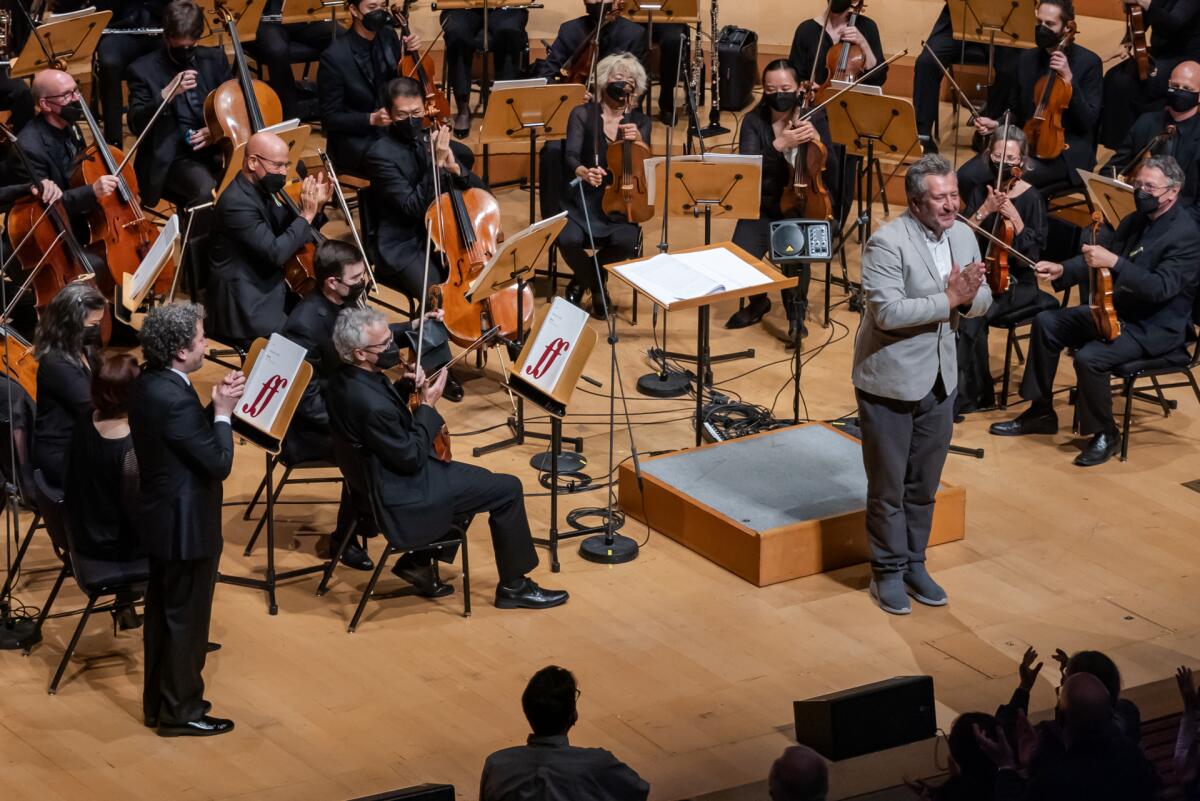
On and off the stage
“Broadway stars might be thought of as extinct creatures from a bygone era of entertainment,” writes Times theater critic Charles McNulty. “But reports of this species being wiped out are greatly exaggerated.” As evidence, he points to a pair of Broadway luminaries currently drawing audiences in New York: “movie idol and showman” Hugh Jackman in “The Music Man” and Patti LuPone in a new revival of “Company,” where she doesn’t even play one of the leads, “but there’s no confusion about who the audience is there to see.”
Enjoying this newsletter? Consider subscribing to the Los Angeles Times
Your support helps us deliver the news that matters most. Become a subscriber.
McNulty puzzles over the casting in a new production of Edward Albee’s “Who’s Afraid of Virginia Woolf?” at the Geffen Playhouse. In the role of George, an “exhausted husk of a man,” is Zachary Quinto; taking on the caustic Martha is Calista Flockhart. “The effect, at least initially, is disorienting,” writes McNulty. “A feeling of pantomime occasionally haunts this staging of ‘Who’s Afraid of Virginia Woolf?’ — as though the performers were trying on Albee’s classic for lark.”
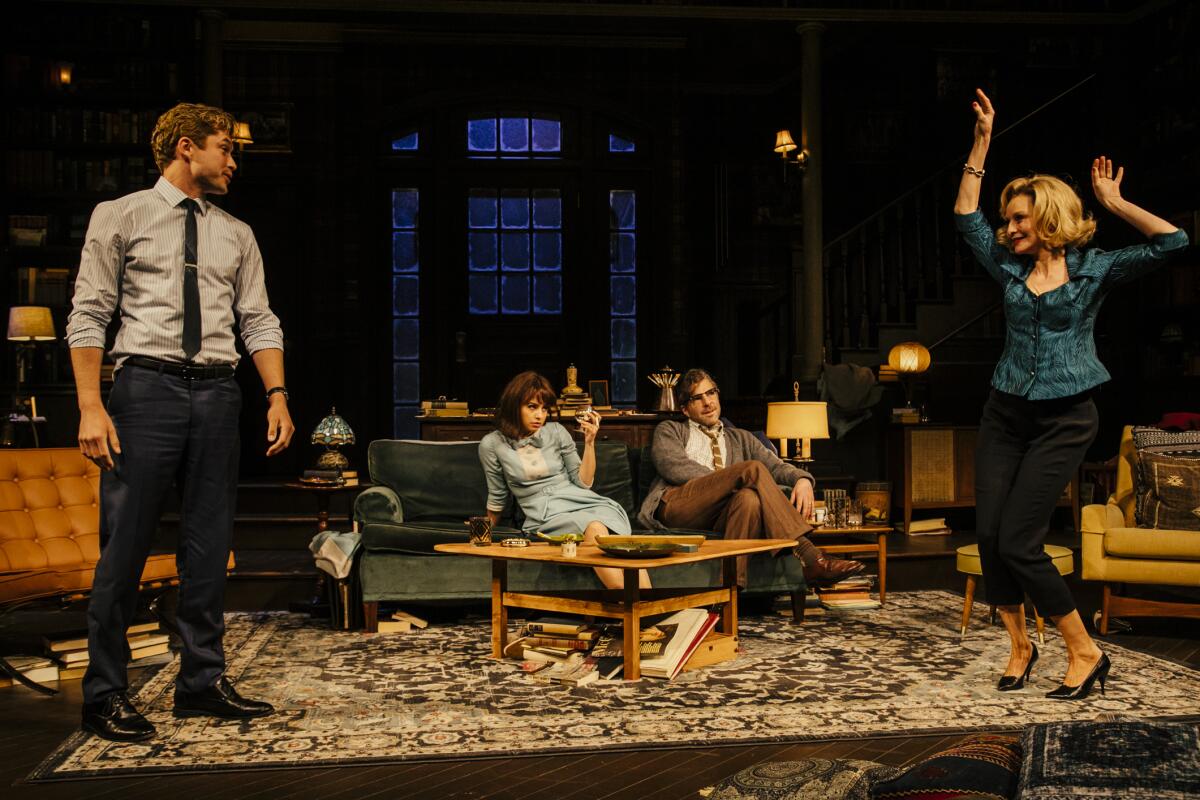
Contributor Scarlet Cheng has a look at why playwright Velina Hasu Houston’s “Tea,” first staged in 1987, remains a go-to piece of theater. The story centers on five Japanese women who married American soldiers during the occupation and migrate to the U.S. Once here, they gather for tea, exchanging confidences and stories. The play, which has been produced internationally, was inspired by the experiences of Houston’s own mother — and many other Japanese war brides whom the writer interviewed as part of her research process. “It’s an especially timely look at racism,” writes Cheng, “including that which can manifest within communities of color.”
The review by Vinson Cunningham of Lileana Blain-Cruz’s staging of Thornton Wilder’s “The Skin of Our Teeth” at the Vivian Beaumont Theater in New York makes me want to see Roslyn Ruff in action.
Art and design
I recently traveled to Denver to have a look at a groundbreaking exhibition that examines the legacy of La Malinche, the Indigenous girl who served as interpreter to Hernán Cortés during the Spanish invasion of Mexico. “Traitor, Survivor, Icon: The Legacy of La Malinche,” on view at the Denver Art Museum, examines the evolving narratives around this enigmatic woman. She’s been held up as Eve to the modern Mexican nation, as a traitor on whose shoulders lay the devastating legacies of colonialism and as a figure of reclaimed feminist histories. Yet Malinche never left a direct record of her words or her person. “As a result of these ambiguities,” write the show’s curators in the catalog, “historians, artists, writers and politicians have been free to project their own agendas to her.”
The show’s catalog, published by Yale University Press, is terrific. Also worth reading: Terezita Romo’s 2005 essay, “Malinche as Metaphor,” which inspired the show’s thematic structure. (Romo was one of the show’s curators, along with Victoria I. Lyall and Matthew H. Robb.)

Architect John Bertram lives in Richard Neutra‘s 900-square-foot McIntosh house in Silver Lake. My colleague Lisa Boone looks at how the architect, who has restored homes by Neutra in the past, has added an unobtrusive backyard studio to the property that serves as getaway and workspace.
Met Gala Micro Report
It’s Halloween! Er, I mean #MetGala season. Over at the New York Times, chief fashion critic Vanessa Friedman digs into the lewks. The theme — “Gilded Glamour” — was “either a recipe for extravagant disaster or irony,” she writes. Unsurprisingly, attendees leaned into excess, and “those who played it understated simply got lost in the excess.”
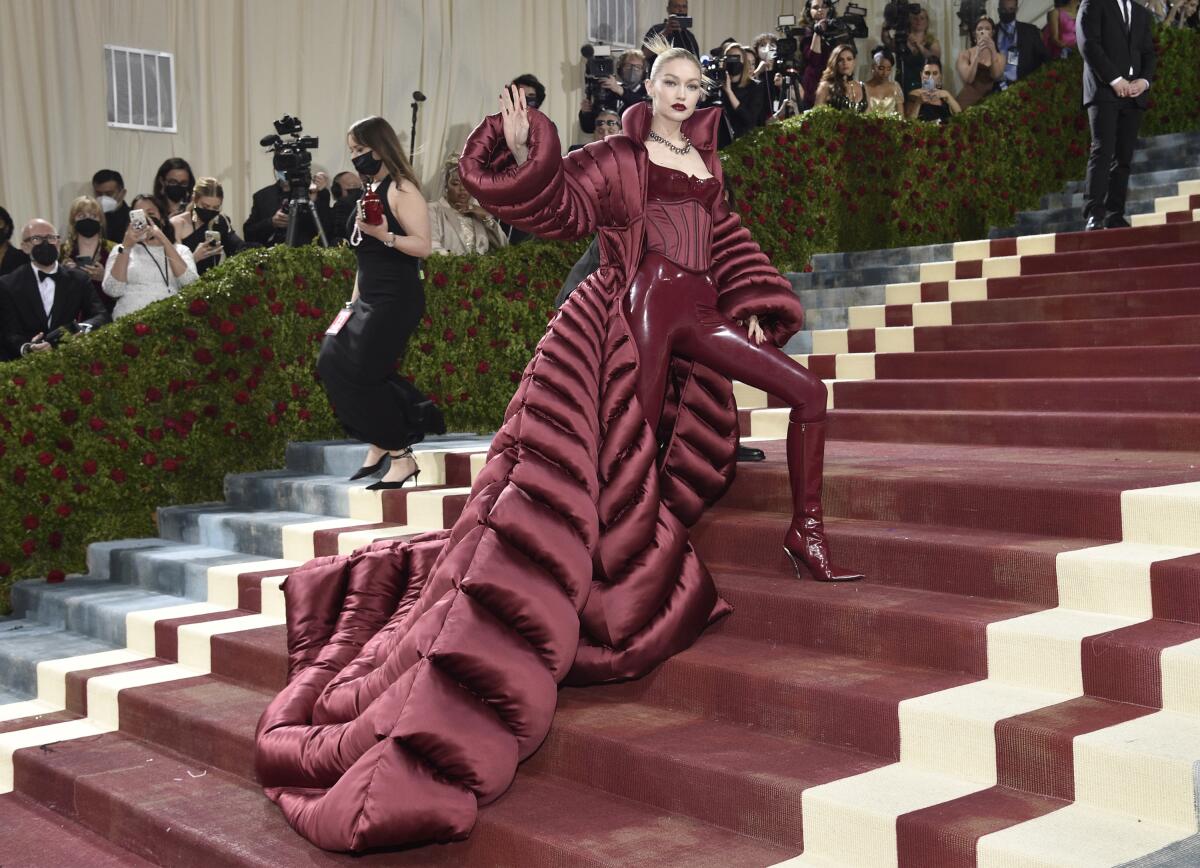
The Cut has a roundup of all the ensembles — some of which had serious tía living room energy.
And, of course, there was Kim Kardashian walking the red carpet in the beaded gown once worn by Marilyn Monroe in 1962 to wish President Kennedy a happy birthday. The move left textile conservators and fashion curators aghast: “I’m frustrated because it sets back what is considered professional treatment for historic costume,” Sarah Scaturro, chief conservator at the Cleveland Museum of Art tells my colleagues Nardine Saad and Deborah Vankin. “In the ’80s, a bunch of costume professionals came together to state a resolution that historic costume should not be worn.”
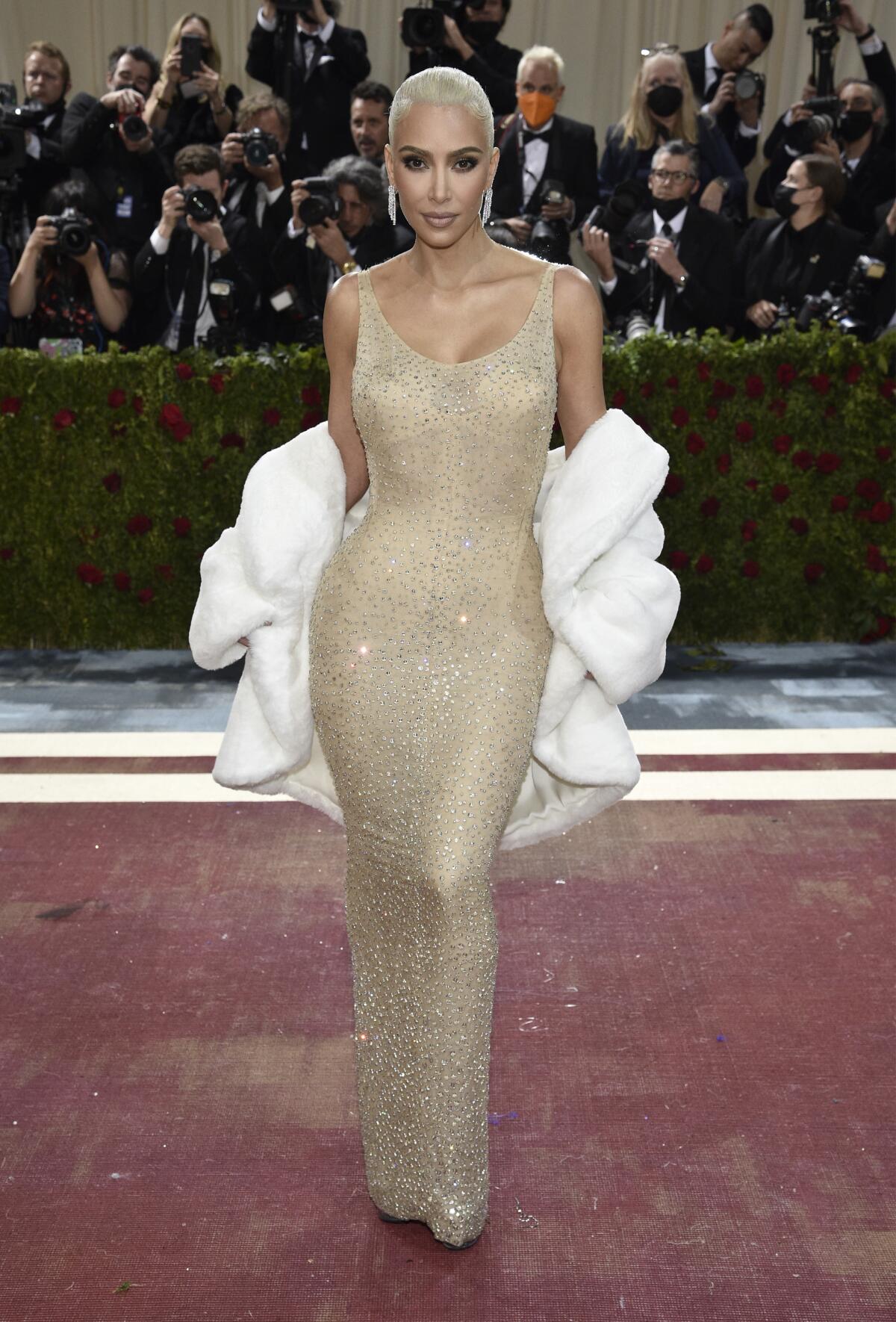
If some of the looks didn’t exactly feel Gilded Age, the fashion account @diet_prada helpfully selected the styles that felt most true to the art of the era — though I would say that no one successfully pulled off a Madame X. (It was a valiant attempt, Maude Apatow, but I need much more haughty grandeur.)
The Detroit Institute of Arts did note that Billie Eilish was looking very “Madame Paul Poirson” by John Singer Sargent. And Vogue gave us an Eilish/Georges Seurat mashup.
But what I liked most was the magazine’s party diary by Sinna Nasseri. More like this, please.
Essential happenings
Matt Cooper has all the things-to-do for the Mother’s Day weekend, including a performance by Westside Ballet at the Broad Stage (complete with Champagne reception!) and a screening of the film version of “Mamma Mia!” at the Electric Dusk Drive-In in Glendale.
This month, the Getty kicks off a series of 10 free community arts festivals around Los Angeles, with pop-ups in Lincoln Heights, Crenshaw, Pacoima, Reseda and Watts. The festivities get rolling on May 14 and 15 with two days of events in Inglewood held in collaboration with the Beckmen YOLA Center. There will be DJs, jazz performances, a sound bath, art and capoeira workshops and performances by the Youth Orchestra of Los Angeles.
Moves
Oscar-winner Ariana DeBose is set to host the Tony Awards.

Jeremy Frank has been appointed chorus director for L.A. Opera. He replaces Grant Gershon, who plans to step down from his dual roles as resident conductor and chorus director at the end of the current season.
The Getty Research Institute has appointed two new associate directors: Kara Olidge will serve as associate director for collections and discovery and Khristaan Villela will join as associate director of dissemination and external affairs.
L.A. Metro has announced the artists who will be working on site-specific art installations for the extension of the Purple Line into West Los Angeles. They include: Eddie Rodolfo Aparicio, Moses X. Ball, Phung Huynh, Rigo 23, Gala Porras-Kim, Devon Tsuno and Meleko Mokgosi.
Passages
Photographer Marcus Leatherdale, known for his portraits of downtown Manhattan scenesters — many before they would become well known as singers or artists — has died at 69.
Neal Adams, a comic book artist who brought a darker, more menacing look to the Batman franchise, is dead at 80.
In other news
— “I wanted them to see what I had seen as a reporter: that Los Angeles was a city of cruel inequalities whose relative wealth and comfort were built upon the labor and the lives of uprooted peoples.” Absolutely read Héctor Tobar’s New York Times magazine essay on the anniversary of the 1992 Los Angeles uprising.
— Ukrainian officials say Russian troops have raided and looted three museums in Mariupol, including the Kuindzhi Art Museum.
— When Sonoma State University President Judy Sakaki and her husband lost their house in the 2017 Tubbs fire, also lost was nearly $85,000 in artwork donated to the university for public viewing and educational purposes.
— The Venice Biennale’s central show is about surrealism — but as Alex Greenberger at ARTnews notes, it’s only of the European variety. Someone please send the biennale curators the very fat catalog for that fabulous LACMA show from a decade ago: “In Wonderland: The Surrealist Adventures of Women Artists in Mexico and the United States.”
— We must stop Thomas Heatherwick before he builds again.
— The National Trust for Historic Preservation has published its list of the 11 Most Endangered Historic Places for 2022, and it includes an Arizona military camp that once housed Buffalo Soldiers, Chicano murals throughout Colorado, and the early British colony in Jamestown, Va.
— The Washington Post goes deeper on the Jamestown story: The 400-year-old colonial site is endangered due to chronic flooding as a result of climate change.
— The Mellon Foundation has a look at four projects around the U.S. that reconsider the nature of monuments, including dance, the relocation of a sacred stone and the reconstruction of an early home built by a Black homeowner.
— Because we all need an intellectual palate cleanser: I’m here for this illuminating, inspiring convo between artist Kara Walker and novelist Rabih Alameddine (whose Twitter feed I consistently devour).
And last but not least ...
An epic thread about a marble bust of a Roman general that was lost, then miraculously found ... in Texas.
The biggest entertainment stories
Get our big stories about Hollywood, film, television, music, arts, culture and more right in your inbox as soon as they publish.
You may occasionally receive promotional content from the Los Angeles Times.




